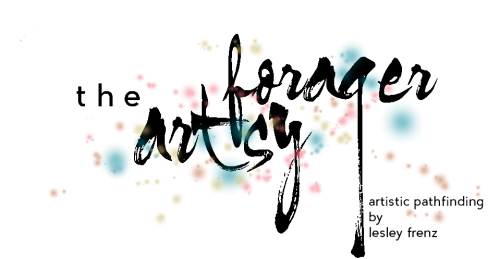Steve Williams and I go way back, although he doesn’t remember. When I was a college senior, my painting professor encouraged me to meet with two artists/gallery owners, Jim Draper and Steve Williams. They liked my work and were very encouraging, wanting to see more and see it framed.. but I chickened out and didn’t follow through. Who knows where my life may have led had I followed their advice and diligently pursued it? Oh how stupid we are when we are young! 🙂
A gallery owner and artist, Steve is always a source for interesting work, his own and what he features in his gallery, Florida Mining. He is also a businessman running not only his gallery but his family’s sign business, Harbinger Sign. So it’s no surprise his questions related to the business of making art!
Steve Williams | What have you found to be most important to an artist’s success? What do you see as the activities an artist does that puts them in an arena of “success”, whatever that means?
Artsy Forager | Hmm.. I suppose to answer this question, you would first have to define success, which differs with each artist. For some artists, financial success, i.e., selling lots of work, taking on commissions, making a living solely by art-making, may be their touchstone. While for others, critical achievement is utmost in their minds– being lauded and accepted in the highest of art circles. Or maybe they are looking for their Andy Warholish 15 minutes of fame.
For success in both arenas, first I would say an artist has to just WORK. Create all the time. Creating work is the most important activity an artist can do because after all, it’s impossible to achieve financial or critical success without having the work to sell or show. Second, use the tools at your disposal and use them smartly. An online presence is more important for an artist now than ever– keep your website updated and make sure it loads and allows browsing easily. Post regularly on Facebook and Twitter ( Hootsuite is a great tool for social media time management ). Write a blog if you’re so inclined– but if you don’t have something interesting to say or share, whether about your work, other artist’s work, your interests, etc., don’t feel like you need to write a blog. Do it well or don’t do it at all. Third, be open to everything. Opportunities come your way when you put yourself in their path. Don’t be afraid to propose a collaboration with a dream brand or approach a dream gallery for representation. You’ll never know if you don’t try.
SW | Is there an area in America that seems to be enjoying greater success in art sales? Or an area that seems to have less?
AF | This is a really tough question for me to answer, as I’m so ingrained in the Southeast and Northwest and I’m not truly in the business of selling art ( yet..? ). There are exciting shows happening in Los Angeles and San Francisco, but is that translating into sales? I can’t say for certain. I see some Southern galleries and artists doing really well, but I can’t say if that is a product of their location or if the galleries are just working really hard to sell art and build up a following of collectors for their artists. Artistic epicenters like NYC, Santa Fe and Miami are always going to be ahead of the game, sales-wise, I think. But there are smaller cities like Austin, Asheville and Portland that are gaining in popularity as artistic tourist destinations, which could equal greater sales.
SW | Have you seen/done research to see if people are buying art more online now? If so, what type of work is being purchased?
AF | I can only speak for what I’m witnessing on my own and hearing about from artists. Collectors ARE buying more work online these days. I see online buyers as more apt to purchase limited editions or less expensive originals than to purchase originals with a higher price tag over the internet. There is inherently less to lose by purchasing work online with a lower price tag. Also, the intricacies and textures inherent in original work are almost impossible to truly see online, so that makes some originals a tougher online sell. Perhaps as technology continues to advance, we’ll see more truly fine art originals being sold online. For now, the online market seems to be made up more of prints, limited editions and lower priced originals. I hope to see that change, as galleries continue to fold, the internet is soaking up the slack– but the technology of viewing originals online still has a long way to go. Hmm.. maybe I need to team up with a venture capitalist and some uber-smart techie and make that happen!
Thank you, my dear Mr. Williams for what may have been my toughest set of questions all week! You never fail to make me think or smile.
To see more of Steve’s artwork, please visit his website. Don’t miss tomorrow’s final Takeover when artists reveal their favorite Artsy Forager finds!











